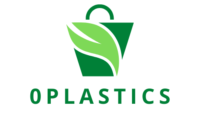Yes, hemp and other natural fibers can be used as sustainable alternatives to traditional plastics. These natural fibers offer several advantages, making them viable options for various applications in the quest for eco-friendly and biodegradable materials. Here’s how hemp and other natural fibers can be utilized as plastic alternatives:
1. Hemp Fiber:
- Renewable Resource: Hemp is a fast-growing crop that requires minimal water and pesticides, making it highly sustainable and environmentally friendly. It can be cultivated in a shorter time frame than trees used for paper or wood-based materials.
- Biodegradability: Hemp fibers are biodegradable and will naturally break down over time, reducing the accumulation of plastic waste and environmental pollution.
- Strength and Durability: Hemp fibers are strong and durable, making them suitable for various applications, including textiles, construction materials, and packaging.
- Low Environmental Impact: Hemp cultivation has a low environmental impact and can improve soil health. It also requires fewer chemical inputs compared to some other crops.

2. Other Natural Fibers (e.g., Jute, Flax, and Kenaf):
- Biodegradability: Natural fibers like jute, flax, and kenaf are biodegradable, meaning they can decompose naturally, reducing their environmental impact.
- Lightweight and Stiffness: These fibers have favorable weight-to-stiffness ratios, making them suitable for applications such as automotive components and construction materials.
- Thermal Insulation: Natural fibers are effective thermal insulators and can be used in building materials for their insulation properties.
- Customization: The properties of natural fibers can be customized through treatments and processing methods to meet specific application requirements.
3. Composite Materials:
- Reinforcement in Composites: Natural fibers can serve as reinforcement in composite materials. When combined with bioplastics, they create durable and biodegradable materials suitable for automotive parts, consumer goods, and packaging.
4. Textiles:
- Clothing and Fabrics: Hemp and other natural fibers are used in the textile industry to create clothing, accessories, and home textiles. They are breathable and comfortable, making them an attractive choice for sustainable fashion.
5. Packaging:
- Paper and Packaging Materials: Natural fibers are used to create eco-friendly packaging materials such as corrugated cardboard, paper bags, and packaging fillers.
6. Construction:
- Building Materials: Natural fibers can be used in construction materials like particleboard, insulation, and concrete reinforcements, offering sustainability and energy-efficiency benefits.
7. Automotive Industry:
- Interior Components: Natural fibers are employed in automotive interior components like door panels, seatbacks, and trunk liners to reduce the weight of vehicles and improve fuel efficiency.
8. Compostable Products:
- Disposable Items: Natural fibers can be used to create disposable products like tableware, cutlery, and food packaging, which are both biodegradable and compostable.
While natural fibers offer numerous benefits as plastic alternatives, they may also have some limitations, such as susceptibility to moisture, which can impact their performance in specific applications. However, ongoing research and technological advancements are addressing these challenges and expanding the use of natural fibers in sustainable materials. The adoption of natural fiber-based alternatives plays a significant role in reducing the environmental impact of traditional plastics and promoting a more eco-conscious approach to material production.
